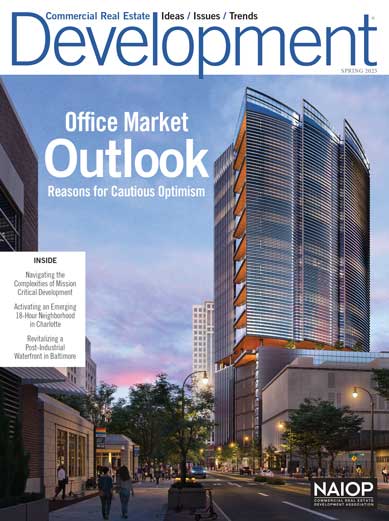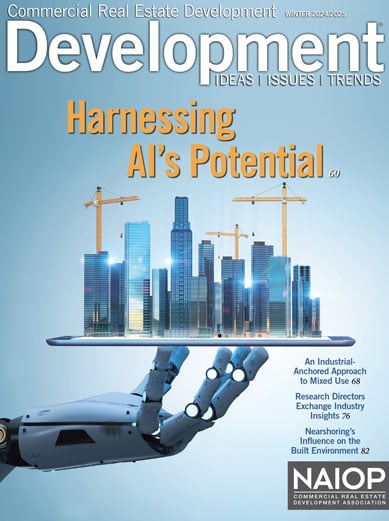Industrial Real Estate 2018: Disruptions and Structural Shifts
Supply chain advances and new technologies are affecting how, where and what types of industrial facilities are being built.
Aerial imaging technology enables commercial real estate professionals to research properties much more quickly and easily than in the past.
Supply chain advances and new technologies are affecting how, where and what types of industrial facilities are being built.
Columbus, Ohio, is using public-private partnerships and $50 million from the U.S. Department of Transportation and Vulcan Inc. to revolutionize its transportation infrastructure.
The average clear height of warehouse ceilings has increased steadily over the past 20 years.
All of these innovations could affect how goods are delivered directly to consumers in the future.
North American developers are animating small spaces with architectural robotics.
 Summer 2025 Issue
Summer 2025 Issue
Development’s summer 2025 issue explores experiential retail and the brick-and-mortar resurgence. Also featured: a modern warehouse campus in Toronto that honors its manufacturing heritage; a coalition of Oregon real estate organizations working to revitalize downtown Portland; and the creative capital stack strategy behind a mixed-use project in West Baltimore.
 Spring 2025 Issue
Spring 2025 Issue
The spring 2025 issue offers insights about where the office market might be heading over the coming year, explores the complexities of mission critical development, and provides detailed looks at two transformative mixed-use projects: The Bowl at Ballantyne in Charlotte and Baltimore Peninsula in Maryland.
 Winter 2024/2025 Issue
Winter 2024/2025 Issue
Development magazine’s winter issue delves into the evolving uses of artificial intelligence in the commercial real estate industry, from lease management and building operations to portfolio assessment and data analysis.
